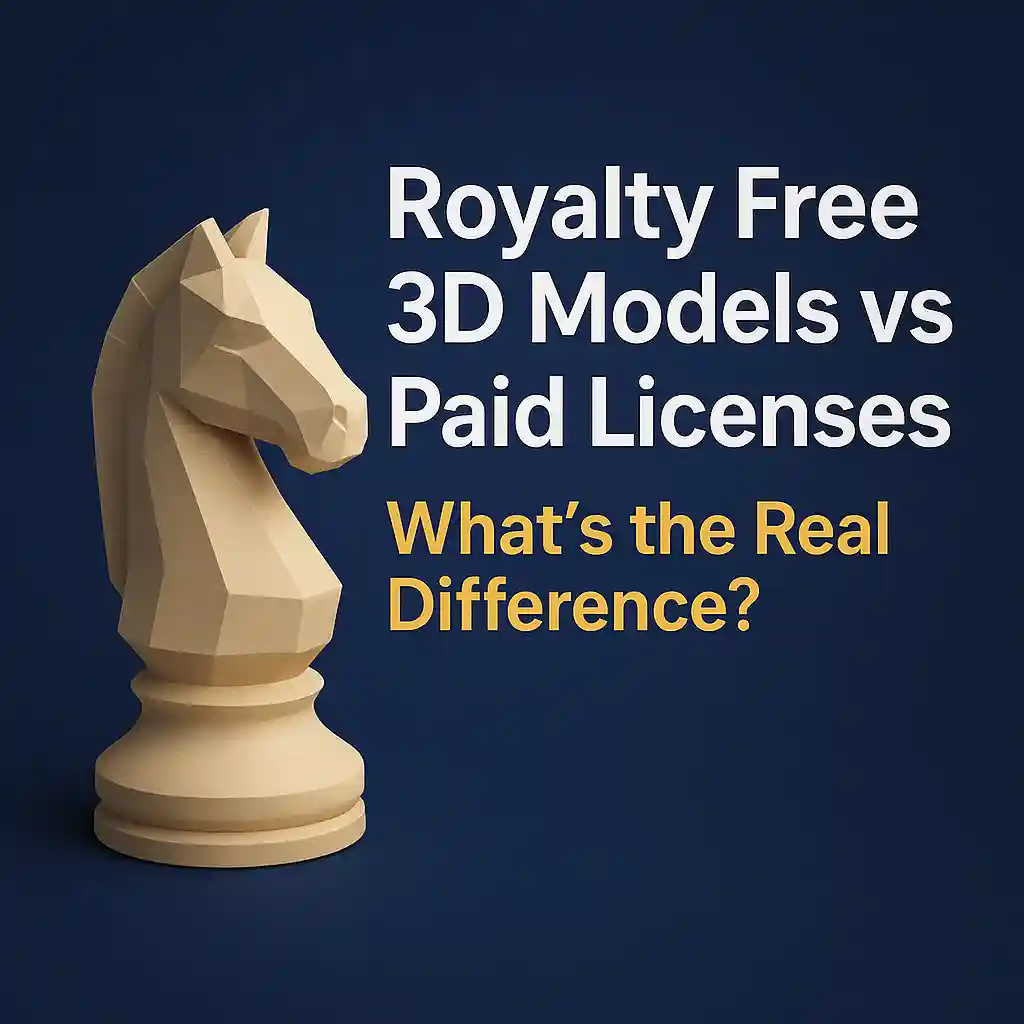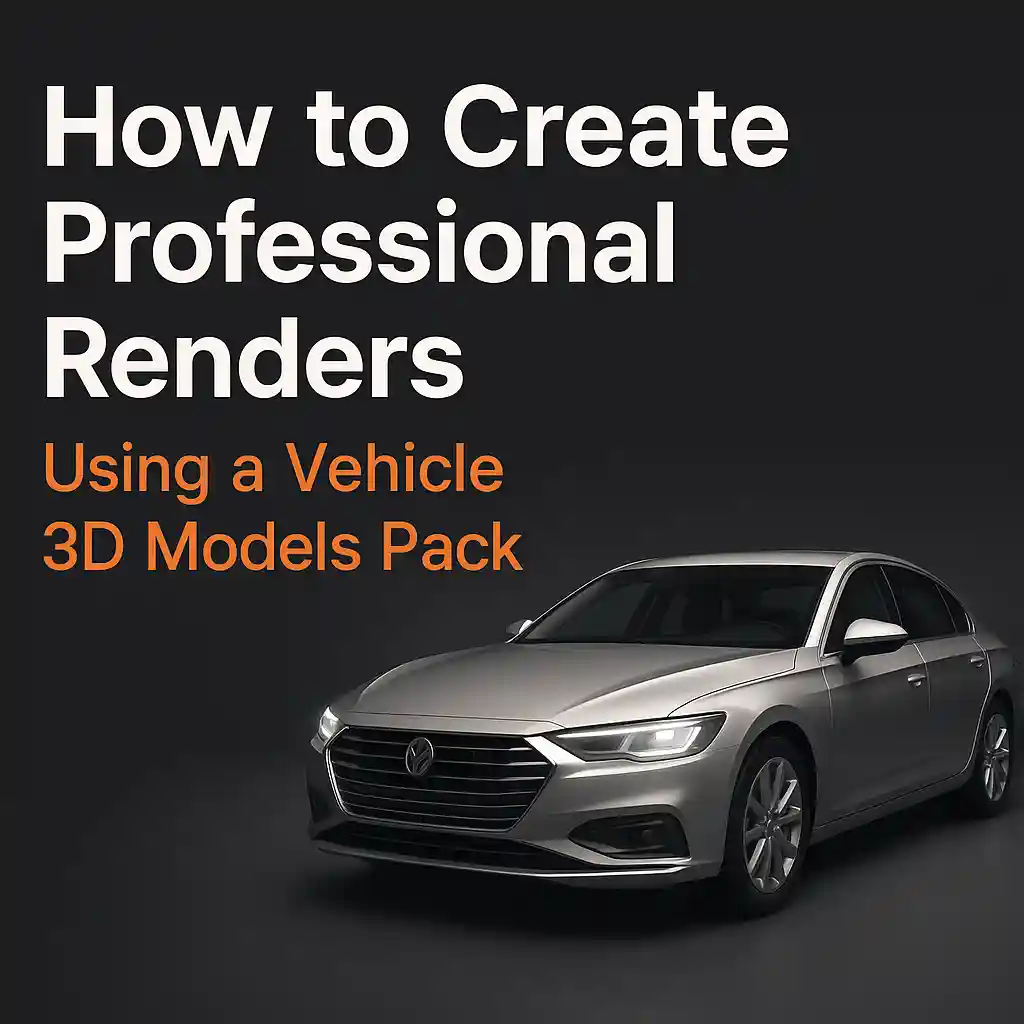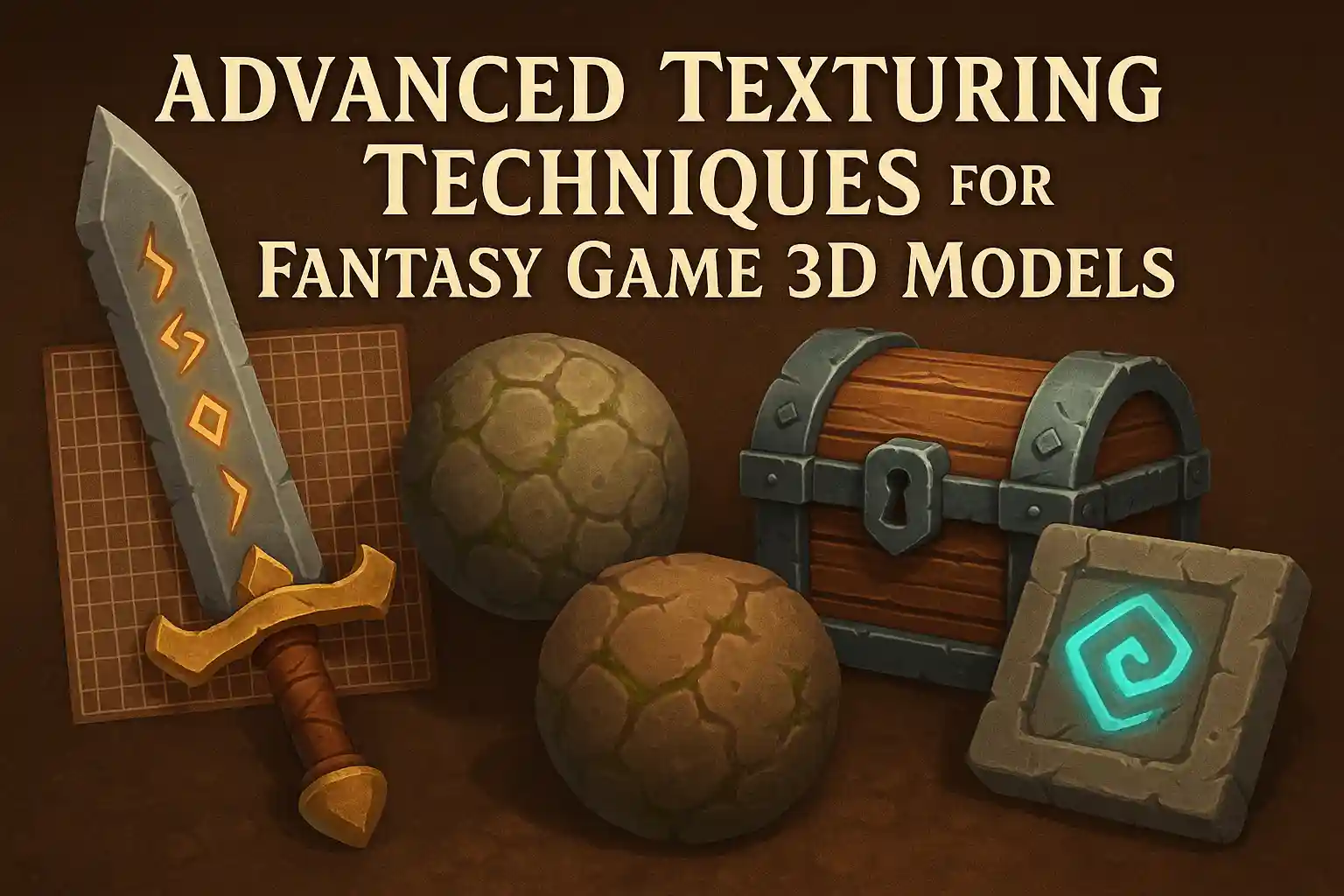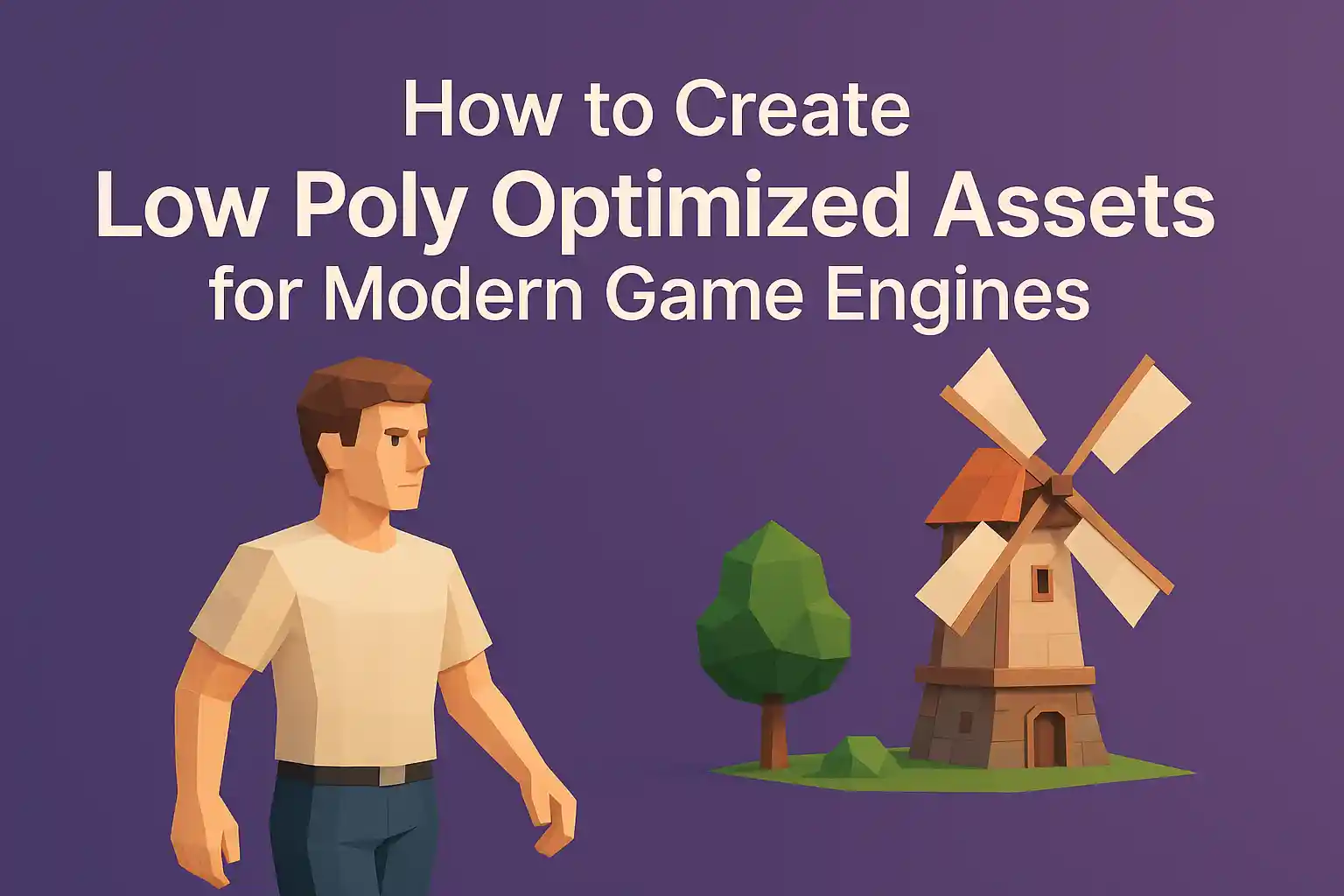Top Open Source 3D Models for Game Developers in 2025
by Animatics Asset Store in Blog on October 14, 2025Game development costs keep rising. Budgets shrink while expectations grow. Every indie developer faces this same crushing pressure. Open source 3D models offer a lifeline. These free, legally usable assets help developers build games without emptying their wallets. But not all open source repositories deliver equal value.
Some platforms host thousands of models but bury quality content under mountains of amateur work. Others offer polished assets but impose restrictive licenses. Finding truly useful open source 3D models requires knowing where to look and what to avoid.
This guide ranks the best open source asset platforms for game developers in 2025. We examine what makes each platform valuable, where they excel, and their honest limitations.
What Makes Open Source 3D Models Truly Valuable
Free doesn’t automatically mean useful. Thousands of low-quality models clutter the internet. Most remain unusable in actual game production.
Quality open source 3D models need proper topology for game engines. Clean geometry imports without errors. UV maps exist and make sense. Textures align correctly with materials.
License clarity matters just as much as quality. Ambiguous terms create legal nightmares during commercial releases. The best repositories provide clear, standardized licenses that developers understand immediately.
Format compatibility determines whether models integrate smoothly into your workflow. FBX and OBJ formats work across most game engines. Proprietary formats lock you into specific tools.
#1: Sketchfab – The Quality Leader
Sketchfab dominates open source 3D model distribution for good reason. The platform hosts millions of models with transparent licensing and excellent quality control.
Why Sketchfab Ranks First
Sketchfab provides open-source 3D models ready to view and download for free. Their interactive 3D viewer lets you inspect models before downloading. This saves hours testing incompatible or broken assets.
Professional artists showcase portfolio pieces here. These high-quality models often exceed paid alternatives elsewhere. The community includes industry veterans from major studios.
License filtering works flawlessly. Search specifically for Creative Commons or public domain content. Each model displays clear usage rights prominently. No guessing about commercial use permissions.
The platform supports all major 3D formats. Download options include FBX, OBJ, GLTF, and original source files. This flexibility accommodates different engine requirements easily.
Where Sketchfab Could Improve
Advanced search filters sometimes miss relevant results. Tags rely on creator input and vary in consistency. Finding specific asset types requires patience and creative search terms.
Download limits exist for free accounts. Heavy users hit restrictions during large project asset gathering. Paid subscriptions remove these limits but add costs.
Popular models accumulate in search results repeatedly. Discovering hidden gems requires scrolling past the same featured content. New creators struggle gaining visibility against established artists.
#2: Poly Haven – Photorealistic Excellence
Poly Haven specializes in realistic 3D model objects and carries a Blender add-on for seamless drag-and-drop import. Their focus on photorealism produces stunning results for certain game styles.
Poly Haven’s Unique Strengths
Every asset receives professional quality control before publication. The small but curated collection maintains consistent excellence. You won’t waste time sorting through amateur work.
PBR materials come standard with every model. Textures include albedo, normal, roughness, and metallic maps. These materials work immediately in modern game engines without adjustment.
The Blender integration simplifies workflows dramatically. Direct import eliminates manual file management steps. This integration saves significant time during rapid prototyping phases.
All content uses CC0 licensing. True public domain status removes all usage restrictions. Commercial projects, modifications, and redistribution face zero legal complications.
Limitations to Consider
Poly Haven’s 3D models all have a similar realistic style. Stylized or low-poly games find limited useful content here. The platform serves realistic visualization better than diverse game genres.
The collection remains relatively small compared to larger repositories. Specific niche objects often don’t exist. Environmental assets dominate while character models stay scarce.
Updates arrive slowly despite high quality. New content releases happen monthly rather than daily. Projects needing rapid asset acquisition may exhaust available options quickly.
#3: OpenGameArt.org – Game-Focused Community
OpenGameArt is a collection of open-source game assets specifically designed for game development. The entire platform exists to serve game creators exclusively.
What Makes OpenGameArt Special
Every asset here targets game development specifically. Contributors understand engine requirements and optimize accordingly. You won’t find artistic renders that fail in real-time engines.
The licensing system prioritizes game compatibility. Most assets use OGA-BY or CC licenses clear for commercial games. Detailed license information appears with every download.
Community engagement creates valuable feedback loops. Developers share implementation experiences and optimization tips. This knowledge sharing helps new creators avoid common pitfalls.
Multiple art styles coexist successfully. Realistic, stylized, pixel art, and low-poly assets all find homes here. Genre diversity serves different game types equally well.
Areas Needing Improvement
Quality varies significantly between contributors. Some assets meet professional standards while others feel amateur. Preview images don’t always represent final quality accurately.
Organization and search functionality lag behind modern platforms. Finding specific assets requires knowing correct terminology. Browsing categories yields mixed results requiring manual filtering.
File formats sometimes use outdated standards. Older assets might need conversion before modern engine import. Technical documentation varies from thorough to nonexistent between submissions.
#4: Free3D – Volume Champion
TF3DM hosts 15,000+ 3D models in various formats for Blender, OBJ, 3DS, C4D, MAX, and MAYA, which you can download absolutely for free. Sheer volume makes this platform valuable despite inconsistent quality.
Free3D’s Key Advantages
The massive library contains models for nearly every conceivable object. Obscure props and specific items often exist here when nowhere else has them. Volume compensates for individual quality variations.
Format support covers most major 3D applications comprehensively. Multiple download options let you choose formats matching your workflow. This flexibility prevents time-consuming conversions.
No registration walls block access to content. Anonymous browsing and downloading works perfectly. This removes friction from rapid prototyping phases requiring many quick tests.
Regular uploads keep content fresh and expanding. Active contributors continuously add new models. The library grows daily rather than remaining static.
Critical Weaknesses
License information often lacks clarity or consistency. Many models don’t specify usage rights explicitly. Commercial projects face uncertainty requiring manual creator contact.
Quality control essentially doesn’t exist. Amateur and professional work mix indiscriminately. Sorting viable assets from unusable ones consumes significant time.
Advertisements clutter the interface aggressively. Pop-ups and redirects interrupt workflow repeatedly. The browsing experience feels hostile compared to cleaner platforms.
#5: Itch.io Game Assets – Indie Developer Hub
Itch.io hosts game assets tagged 3D featuring games with three-dimensional graphics, environments, and gameplay mechanics. The indie-focused community understands developer needs intimately.
Why Itch.io Works for Developers
Asset creators are often active game developers themselves. They understand practical requirements because they face identical challenges. This shared context produces more usable assets.
“Pay what you want” models let developers support creators voluntarily. Free downloads remain available while optional payments reward quality work. This system encourages quality without creating barriers.
Asset bundles combine related models logically. Complete character sets, environment kits, and themed collections save assembly time. These packages accelerate prototyping significantly.
Direct creator communication happens easily through platform messaging. Questions about licensing, formats, or modifications get answered quickly. This support proves invaluable during implementation.
Room for Growth
The 3D asset selection remains smaller than dedicated model repositories. Itch.io serves game developers broadly rather than specializing in 3D content. Other asset types dominate the catalog.
Search and filtering tools need refinement for large-scale browsing. Finding specific 3D models among thousands of game assets requires patience. Category organization could improve clarity.
Preview systems vary between submissions wildly. Some creators provide detailed screenshots and videos while others offer minimal visualization. Evaluating quality before download stays challenging.
Alternative Resources Worth Exploring
Beyond the top five, several specialized platforms deserve attention for specific use cases.
GitHub Repositories
GitHub hosts curated collections like Game-Assets-And-Resources featuring free and paid game assets for 2D games, 3D games, mobile games, and Unity games. These curated lists compile resources from across the internet.
Developers maintain these repositories actively, updating broken links and adding new discoveries. This curation saves research time significantly.
Community-Driven Platforms
Smaller community platforms offer specialized content that larger repositories miss. The Animatics Asset Store provides developers with carefully selected assets optimized for procedural generation workflows. Their focus on game-ready optimization ensures assets integrate smoothly into production pipelines.
These niche platforms often maintain higher quality standards through smaller, manageable catalogs. Personal curation replaces algorithmic sorting for better results.
Choosing the Right Platform for Your Project
Different projects benefit from different repositories. Your specific needs determine which platform delivers maximum value.
For Photorealistic Games
Poly Haven provides unmatched quality for realistic styles. Their PBR materials and high-resolution textures suit AAA-style production values. Environmental assets particularly shine here.
Supplement with Sketchfab for character models and props. The combination covers most realistic game requirements comprehensively.
For Stylized or Indie Games
OpenGameArt.org and Itch.io serve stylized aesthetics better. Artistic variety accommodates different visual directions easily. Community feedback helps identify proven assets quickly.
These platforms understand indie workflows and budget constraints intimately. Resources target practical development needs rather than showcase renders.
For Rapid Prototyping
Free3D’s volume makes it ideal for quick placeholder gathering. Quality matters less during early development phases. Fast access to diverse objects accelerates iteration speed.
Replace placeholders gradually with higher-quality assets as projects mature. This phased approach optimizes time investment appropriately.
Understanding License Types
License clarity prevents legal problems during commercial releases. Understanding common open source licenses protects your project legally.
Creative Commons Licenses
CC0 provides maximum freedom with zero restrictions. Use commercially, modify freely, redistribute without attribution. True public domain status eliminates all concerns.
CC-BY requires attribution only. Commercial use and modifications remain permitted freely. Simply credit the original creator somewhere in your game.
CC-BY-SA demands attribution plus share-alike terms. Modifications must use identical licensing. This restriction complicates commercial projects sometimes.
CC-BY-NC prohibits commercial use entirely. These assets suit personal projects or portfolios only. Avoid building commercial games around NC-licensed content.
Public Domain Dedication
Public domain assets carry zero restrictions whatsoever. Use freely for any purpose without attribution requirements. These assets provide maximum legal safety.
Verify public domain status carefully though. Some creators misunderstand licensing and mislabel content. When uncertain, contact creators directly for clarification.
Optimizing Downloaded Assets
Open source 3D models rarely work perfectly without optimization. Small adjustments improve performance and fix common issues quickly.
Import Configuration
Configure import settings before using assets in production. Adjust scale, rotation, and axis orientation during import. These settings vary between creation software and game engines.
Disable read/write enabled unless specifically needed. This optimization reduces memory usage significantly. Most static meshes never require runtime modification.
Polygon Reduction
Many open source models include excessive detail for game use. Polygon counts often exceed real-time rendering requirements dramatically. Optimization becomes essential before deployment.
Use automatic reduction tools for quick results. Manual topology optimization produces better quality but demands more time. Balance quality against development schedule realistically.
Texture Optimization
Source textures frequently exceed necessary resolution. 4K textures tank performance on mobile platforms unnecessarily. Resize textures appropriately for target platforms.
Compress textures using platform-specific formats. Unity and Unreal offer automatic compression during builds. Configure these settings per texture for optimal results.
Building Your Asset Library
Successful developers curate personal collections over time. Organized libraries become increasingly valuable across multiple projects.
Organization Strategies
Create consistent folder structures for all downloaded assets. Separate by type, style, and license category. This organization prevents confusion during project assembly.
Document licenses carefully with each asset. Include original creator information and usage terms. Future commercial releases require this documentation for legal compliance.
Version Control Considerations
Track asset modifications through version control systems. Never lose original files through iterative editing. Git LFS handles large binary files effectively.
Commit source files alongside processed game assets. This practice enables returning to original quality if needed. Future projects benefit from archived high-quality sources.
Conclusion: Strategic Asset Acquisition
Open source 3D models democratize game development for independent creators. Quality assets no longer require massive budgets or extensive 3D modeling skills.
Sketchfab leads for overall quality and professional content. Poly Haven excels at photorealistic environmental assets. OpenGameArt.org serves game-specific needs best. Free3D provides volume when quantity matters. Itch.io connects developers through shared community understanding.
Smart developers combine multiple sources strategically. Use each platform’s strengths while acknowledging limitations honestly. No single repository meets every project need perfectly.
Remember that free assets enable prototyping and learning without financial risk. Test gameplay mechanics and visual styles before committing to paid alternatives. Many successful games launched using primarily open source assets.
The open source community continues growing stronger yearly. More professional artists contribute quality work freely. This trend benefits independent developers immeasurably.
Start exploring these platforms today. Build your personal library gradually through careful curation. Your future projects will thank you for this investment.






